What is 5G? Speeds, coverage, comparisons, and more
It has been years in the making, but 5G has finally become a reality. Coverage has been expanding rapidly in the U.S. Here's everything you need to know.

It’s been years in the making, but 5G — the next big chapter in wireless technology — is finally approaching the mainstream. While we haven’t yet reached the point where it’s available everywhere, nearly all of the best smartphones are 5G-capable these days, and you’re far more likely to see a 5G icon lit up on your phone than not.
There’s more to 5G than just a fancy new number, though. The technology has been considerably more complicated for carriers to roll out since it covers a much wider range of frequencies than older 4G/LTE technology, with different trade-offs for each. It’s also a much farther-reaching wireless technology, promising the kind of global connectivity that was once merely a dream found in futuristic sci-fi novels.
 SOPA Images/LightRocket/Getty Image
SOPA Images/LightRocket/Getty ImageAll of this hype around 5G may leave you wondering exactly what to make of it, but the good news is that it’s not as complicated for consumers as you may think. It ultimately comes down to knowing what 5G service is like where you live and work, deciding on the best 5G phone, and picking the best 5G cell phone plan.
Still, with the powerful new capabilities offered by 5G networks, a deeper understanding of how it works can help you make the right decisions. Here’s everything you need to know about 5G.
What is 5G?
 Mavenir
MavenirSimply put, 5G is the fifth generation of mobile networking that is slowly replacing 4G/LTE networks. And 5G offers the potential for dramatically faster download and upload speeds than 4G networks, plus considerably lower latency — the time it takes devices to communicate with wireless networks.
Also, 5G networks are inherently more efficient, handling more connections per tower and at faster speeds per device. It is also designed to work across a wider range of radio frequencies (aka spectrum), opening up new possibilities in the midrange and extremely high frequency (EHF) mmWave (millimeter-wave) bands for carriers to expand their network offerings. Because 5G is an entirely new technology that operates on new frequencies and systems, 4G-only phones are incompatible with the new 5G networks.
The first 5G networks commenced deployment in 2019, but the groundwork for the next-generation network was laid years earlier. The 5G standard architecture was created in 2016, at which point every company and person involved from both the network and consumer sides could start making devices that were compliant with the new 5G standard.
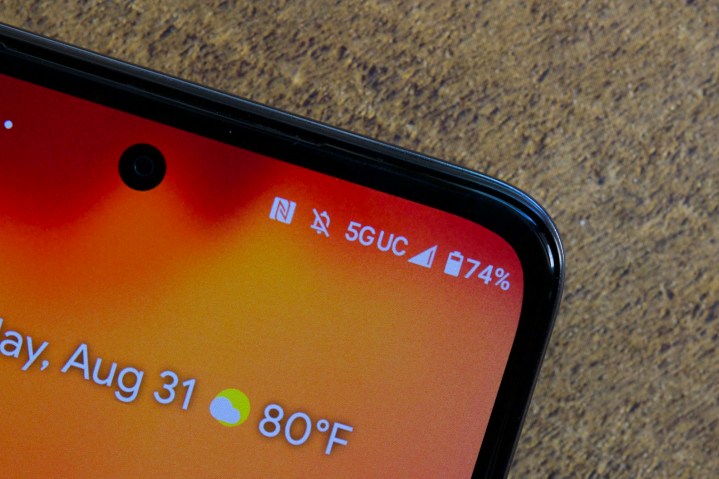 Joe Maring/Digital Trends
Joe Maring/Digital TrendsAt this point, 5G hasn’t hit total market saturation quite yet — but it’s getting close. It takes a considerable amount of investment to build an entirely new network. For example, 4G/LTE took about three years to reach mainstream status following its initial 2010 deployment in the U.S. However, 4G/LTE didn’t have to suffer through the same growing pains as the newer 5G technology since it was easier to deploy by comparison. All major U.S. carriers used the same basic 4G/LTE technology.
With 5G, carriers have had to take unique approaches in working around existing 4G/LTE deployments while also working to acquire licenses for the higher frequencies that are necessary to deliver on the biggest promise of 5G: ultrafast gigabit speeds. That’s taken more time, and there have been a few roadblocks along the way.
It will likely still be a year or two before 5G becomes the dominant network worldwide, but we’re definitely getting closer, particularly in the U.S. T-Mobile already boasts that its fastest 5G coverage is available to 260 million people, and it expects that to grow to over 300 million — or 90% of the U.S. population — by the end of 2023. While T-Mobile had a big head start over its rivals, the other companies are catching up quickly: earlier this month, Verizon announced it had surpassed the 200 million mark.
Those numbers also only refer to the carriers’ enhanced 5G networks. Depending on the carrier, standard low-band 5G already reaches 85% to 95% of the U.S. population. While these lower-band frequencies don’t deliver the same impressive speeds, they offer other benefits — and the ability to replace 4G/LTE.
How does 5G network technology work?
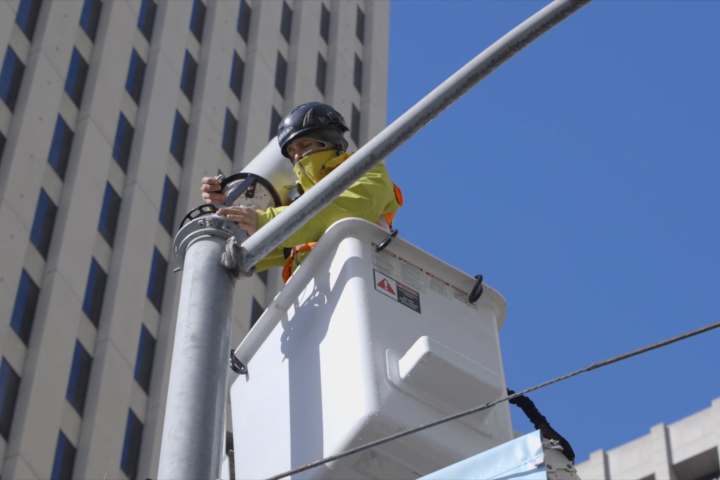 O-RAN Alliance
O-RAN AllianceLike 4G, 5G technology operates on a wide range of radio spectrum allotments, but is capable of running on a wider range than current networks. With 5G, there are three distinct frequency ranges that work in different ways. The most common form of 5G has traditionally been referred to as Sub-6, but that’s more recently been divided into two subcategories. Beyond that is mmWave, which operates on significantly higher frequencies — with some important tradeoffs.
Sub-6 (Low-Band): Short for Sub-6GHz, the term Sub-6 technically includes all 5G frequencies that operate below that 6GHz threshold. However, in the early days of 5G, that was almost entirely made up of low-band frequencies below 2GHz — the same spectrum that had been used for years by 2G, 3G, and 4G/LTE networks. Most carriers began their 5G deployments using these frequencies as it was the easiest and most affordable way to start; 5G hardware could share the same towers and airwaves used by 4G/LTE service, and since low-band frequencies travel much farther and more effortlessly penetrate walls, trees, and other obstacles, carriers also didn’t have to put up a huge number of new towers to blanket areas with 5G coverage. However, there was a downside to using this low-band spectrum: 5G performance wasn’t significantly faster than the 4G/LTE services that came before. In fact, it could actually be slower in some cases, as 5G traffic had to yield the digital right-of-way to older 4G/LTE signals using the same frequencies.
mmWave: At the other end of the 5G spectrum is millimeter wave, a swath of EHF spectrum where 5G currently operates at frequencies between 24GHz and 39GHz, although it’s likely to expand even higher in the future. As the name suggests, these frequencies have a very short wavelength, which means they don’t travel very far at all — a couple of city blocks at best. The upside is that 5G can deliver staggering performance over mmWave — easily reaching 4Gbps download speeds under ideal conditions. More significantly, this higher capacity also allows for better coverage in densely packed areas like stadiums, concert venues, and airports. However, to blanket an area with this incredibly fast coverage requires thousands of small network cells — covering 95% of New York City would require nearly 60,000 individual mmWave towers. This is why Verizon’s early 5G coverage, which relied solely on mmWave, was available only in the downtown cores of a few major cities.
Sub-6 (midband/C-band): To deliver on the promise of 5G, carriers and regulators needed to find a happy medium between the ultrafast but extremely short-range mmWave and the lower-band frequencies that offered expansive range but no meaningful improvement in speed over the 4G/LTE networks that 5G is supposed to replace. The answer was found in a (mostly) new range of midband frequencies, ranging from T-Mobile’s 2.5GHz network to the 3.7GHz to 3.98GHz C-band spectrum licensed by Verizon and AT&T. This spectrum has become the sweet spot for 5G, offering substantially better range than mmWave while delivering near-gigabit performance levels that leave 4G/LTE networks in the dust.
Today, the major U.S. carriers have deployed 5G in all three of these spectrums, although they’ve taken slightly different approaches. Verizon began with mmWave in a handful of cities before launching its nationwide low-band 5G network in late 2020 and then rolling out its C-band frequencies in early 2022. T-Mobile started with a very low-band 600MHz network that allowed it to be first to offer nationwide 5G in all 50 U.S. states, and then used the 2.5GHz midband spectrum it acquired from its 2020 merger with Sprint to get a head start on building out its faster 5G network. It deployed faster mmWave only in places like stadiums, where the higher capacity was absolutely necessary. AT&T has trailed slightly behind both its rivals; it has a large low-band 5G network, and like T-Mobile, it uses mmWave transceivers to cover denser areas, but its C-band deployments have only reached about a dozen cities so far.
How fast is 5G?
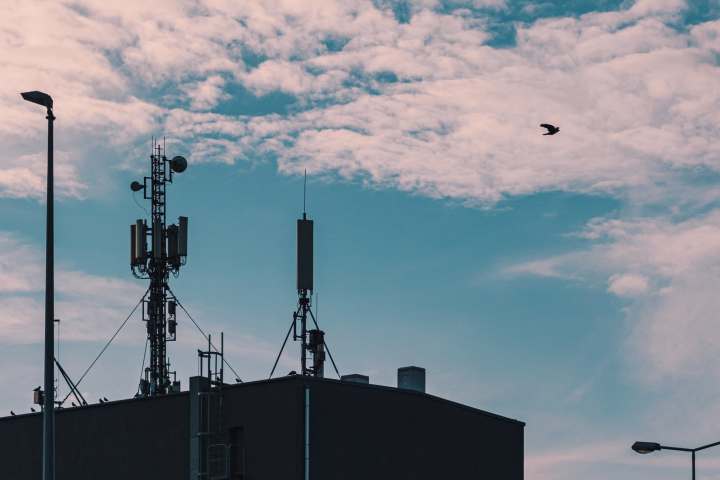 Jakub Pabis / Unsplash
Jakub Pabis / UnsplashClearly, 5G is faster than 4G, but by how much? The short answer is: “it depends.” The standards for telecommunications technologies, developed by 3GPP, are somewhat complex, but here’s a general rundown of the speeds 5G is capable of reaching under optimal conditions:
Peak data rate: 5G offers significantly faster data speeds. Peak data rates can hit 20Gbps downlink and 10Gbps uplink per mobile base station. That’s not the speed you’d experience with 5G (unless you have a dedicated connection) — it’s the speed shared by all users on the cell. Even then, it’s a theoretical maximum that represents the upper limits of the 5G standard. Real-world 5G speed: While the peak data rates sound impressive, actual speeds will be considerably lower, and vary widely based on many factors, including what spectrum your signal is traveling on and how far away you are from the nearest tower. Typical 5G speeds can range from 50Mbps to more than 3Gbps for downloads. Recent reports have pegged median nationwide download speeds between 100Mbps and 200Mbps. Latency: Latency refers to the time it takes to establish a network connection before you can begin transmitting data. This has a big impact on activities like surfing and gaming, where smaller amounts of data are regularly sent back and forth. Under ideal circumstances, latency should be under 4 milliseconds (ms), but lower is always better. The best wired fiber-optic networks can offer a latency of 1ms to 2ms. Efficiency: Radio interfaces should be energy efficient when in use and drop down to low-energy mode when not in use. Ideally, a radio should be able to switch into a low-energy state within 10 milliseconds when not in use. Spectral efficiency: Spectral efficiency is “the optimized use of spectrum or bandwidth so that the maximum amount of data can be transmitted with the fewest transmission errors.” For example, 5G should improve spectral efficiency over LTE at 30 bits/Hz downlink and 15 bits/Hz uplink. Mobility: With 5G, base stations should support movement from 0 to 310 mph. This means the base station should function despite antenna movements. Low-band and midband 5G frequencies are much better at handling this than those in the mmWave spectrum. However, that’s not likely to be a practical concern, as you’re more likely to leave mmWave coverage once you start moving at faster speeds. Connection density: 5G can support many more connected devices than 4G/LTE. The standard states that 5G should be able to support 1 million connected devices per square kilometer. That huge number takes into account the slew of connected devices that will power the Internet of Things (IoT). What kind of performance you’ll get with that many devices connected is another matter, but that’s where mmWave provides a significant advantage.In the real world, actual 5G speeds vary widely. Eventually, midband networks will be able to deliver speeds of multiple gigabits per second (Gbps) through technologies such as Carrier Aggregation, but for now, you can expect to see speeds of around 200Mbps to 400Mbps if you’re on a midband/C-band network and under 100Mbps on low-band 5G services. Those numbers may go higher under ideal conditions — we’ve measured gigabit speeds on C-band frequencies, but that’s far from typical. Normally, you’ll need to be relatively alone near a mmWave transceiver to get those kinds of speeds. Remember that you’re also sharing whatever bandwidth is available with everyone else using that same tower, so your performance will drop during peak times of the day in a busy area.
If you’re on low-band 5G, you’ll likely find that your connection is no faster than 4G/LTE. In some cases, it may even be slower. This is largely due to 4G/LTE traffic still using those frequencies. Early low-band 5G deployments were “piggybacked” onto 4G/LTE towers using a technology known as Dynamic Spectrum Sharing (DSS). This allows 5G and 4G/LTE traffic to coexist on the same airwaves, but since DSS is a 5G feature, it’s the 5G traffic that has to make room for the 4G/LTE signals. The good news is that low-band 5G performance will improve as more folks move to 5G smartphones, and there’s less 4G/LTE traffic to contend with.
5G UW vs. 5G UC vs. 5GE
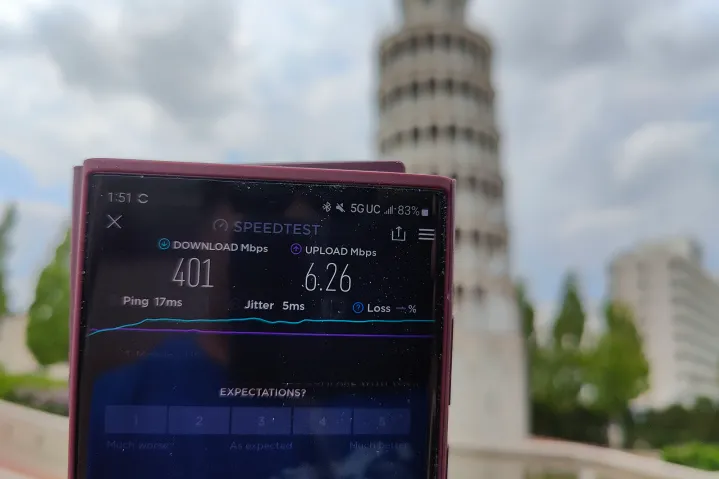 T-Mobile 5G at the Leaning Tower of Pisa in Italy Adam Doud/Digital Trends
T-Mobile 5G at the Leaning Tower of Pisa in Italy Adam Doud/Digital TrendsSince midband 5G offers much better performance than the lower-band 5G frequencies, each carrier has worked hard to promote these enhanced 5G services with unique brand names and special status bar icons on your phone. This lets customers know when they’re using the best 5G, while also setting them apart from their rivals.
AT&T was actually the first to introduce a special 5G brand, but unfortunately, that initial attempt just muddied the waters as it didn’t even represent a real 5G network. AT&T’s so-called 5G Evolution (5GE) network was little more than a marketing stunt; the carrier rebranded its newly upgraded 4G/LTE Advanced network, claiming it was the first step in the “evolution toward 5G.” In reality, it was the same 4G/LTE network technology that Verizon and T-Mobile already offered, falsely labeled to make people think that AT&T had beaten the others to the punch at rolling out 5G.
 AT&T
AT&TAfter getting rightfully pilloried for that silly move, AT&T got a bit more conservative with its 5G plans. However, it was still the first to introduce a unique name in early 2020 to distinguish its mmWave service from its broader low-band network. AT&T called this “5G Plus” (5G+), and it was initially available in the downtown cores of about 35 cities. In early 2022, AT&T added its new C-band spectrum to the 5G+ network, increasing coverage in about a dozen U.S. cities over the course of that year.
Verizon followed in late 2020 with 5G Ultra Wideband (5G UW). Unlike AT&T, this was a rebranding of what had been its entire 5G network up to that point since Verizon began 5G solely with mmWave. The 5G UW name became necessary safter Verizon’s CEO took the opportunity to get on stage at Apple’s iPhone 12 launch event and announce the carrier’s new 5G Nationwide service — a low-band 5G network that would bring 5G to the rest of the country. As with AT&T, Verizon expanded its 5G Ultra Wideband service to encompass the new C-band frequencies in early 2022, increasing 5G UW coverage to more than 100 million customers practically overnight.
Meanwhile, T-Mobile had been slowly building out a 2.5GHz midband network since it acquired that spectrum from Sprint in 2020. The “Uncarrier” already offered better capacity and speed than its rivals, which had to acquire new C-band spectrum from the Federal Communications Commission (FCC) and battle fears from the aviation industry. However, T-Mobile didn’t fully brand its midband network until 2021, dubbing it 5G Ultra Capacity (5G UC) to distinguish it from its low-band 5G Extended Range network.
Where is 5G coverage available?
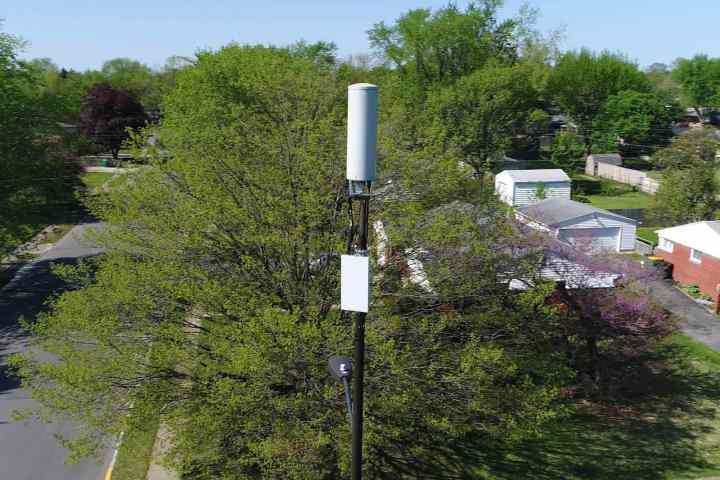 Verizon
VerizonSo, when should you expect to have 5G available in your neighborhood? If you live in a relatively populated area, at least one — and probably all — of the major carriers already offer 5G. T-Mobile, AT&T, and Verizon have all long since rolled out their “nationwide” networks using low-band 5G. Today these networks collectively cover over 90% of the U.S. population.
All three major U.S. carriers are continuing to build out their midband 5G networks, and while Verizon and T-Mobile now cover a majority of the U.S. population, it’s likely to take several years before we reach ubiquitous 5G coverage. Each 5G carrier also has a slightly different 5G rollout strategy, so your experience will vary greatly depending on your carrier. Here are all the details we currently have concerning each carrier’s deployment plans.
Verizon
Verizon’s 5G nationwide low-band network is technically smaller than AT&T and T-Mobile’s, as it launched much later. Verizon spent years building out mmWave before it started work on its low-band 5G Nationwide deployment, which only arrived in late 2020. Since it began with mmWave, Verizon offers a much greater number of smaller mmWave cells, covering the downtown cores of over 80 cities. That’s still not enough to provide a meaningful, reliable, and widespread mmWave network, but Verizon has expanded that significantly over the last year with its new C-band coverage. As of March 2023, Verizon’s 5G Ultra Wideband network reaches 200 million people. As the carrier continues to expand to more rural areas, its smaller low-band network will become considerably less relevant.
AT&T
AT&T has a widespread low-band 5G network, with nationwide coverage of around 285 million people. However, the type of 5G connectivity that you get depends on where you live. Like Verizon, it relied heavily on mmWave in the early days, but it also saw the writing on the wall and transitioned to a low-band 5G rollout much sooner. This means less mmWave coverage than Verizon — the core areas of about 39 cities — but a much more expansive low-band network. AT&T’s 5G+ service began with this handful of mmWave cells, rolling in the C-band spectrum in early 2022. Nevertheless, AT&T is still playing catch-up with its rivals, and so far, it’s only deployed full C-band coverage to about a dozen cities, bringing the total number of cities where 5G+ is offered to around 50.
T-Mobile
T-Mobile 5G has been leaving its rivals in the dust with robust nationwide coverage and a midband 5G network that covers over 75% of the U.S. population. This has allowed T-Mobile to boast the fastest median download speeds by a huge margin since far more of its customers are able to access its 5G Ultra Capacity network. T-Mobile was also the first carrier to deploy a nationwide 5G network to all 50 states, although that initial network — now known as 5G Extended Range (5G XR)— relies on the lowest of the low-band frequencies, so it’s not particularly fast. However, with 5G Ultra Capacity already covering 260 million people, and T-Mobile promising to extend that to 300 million by the end of 2023, most customers will rarely encounter the carrier’s low-band 5G XR network.
Best 5G phones available now
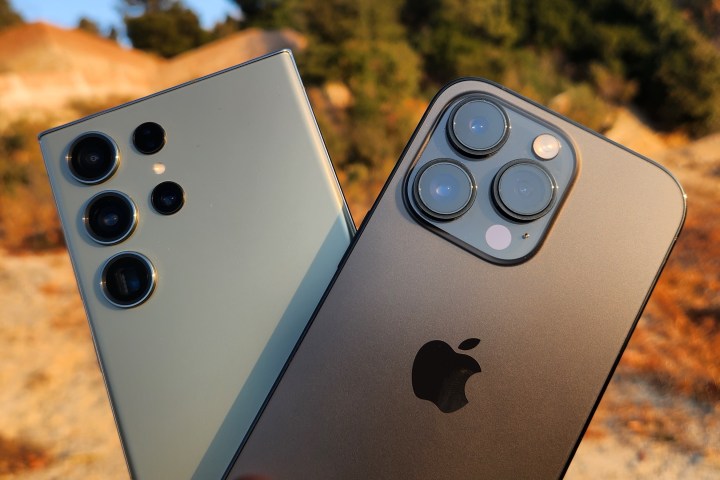 Nadeem Sarwar / DigitalTrends
Nadeem Sarwar / DigitalTrendsIt’s tough to find a phone nowadays that doesn’t have 5G, thanks to the carriers’ aggressive network rollouts and development of more affordable mobile chipsets that include 5G radios. So when you’re looking for the best 5G phone, you’re really just asking for the best phone overall.
Right now, that means the iPhone 14 and iPhone 14 Pro, the Samsung Galaxy S23 and S23 Ultra, the Google Pixel 7, and less expensive phones from OnePlus and Motorola. Each of these phones has 5G — though in some cases, on the cheaper end, you may only get Sub-6 and not mmWave. However, that’s nothing to worry about; as we’ve already mentioned, mmWave is more of a “nice to have” than a requirement, and you’re unlikely to even encounter a mmWave signal most of the time, much less need one.
Can you use 5G for home internet?
 T-Mobile
T-MobileWith incredible speeds and low latency, 5G has good potential as a replacement for home wireless networks. That’s particularly true in rural areas, where fast wired internet is tough to come by and the only other alternative is satellite internet. While the capability is certainly there, 5G home internet is taking a while to roll out in real numbers.
We’re still a few years away from the promise of 5G to bring direct connectivity to every device in our homes, so today’s 5G home internet solutions, also known as Fixed Wireless Access (FWA), merely replace your wired broadband router with a 5G device; Wi-Fi and wired Ethernet connections are still used to link everything up within your home.
Verizon 5G home internet
Verizon offers 5G home internet starting at $25 per month, and the recent addition of C-band spectrum to its 5G Ultra Wideband service means it’s now available in 1,700 cities. Sadly, this still limits access to the service in rural areas where it could be more helpful. Speeds will vary depending on where you live; Verizon has a lookup tool you can use to get an estimate, but don’t expect these to rival broadband services unless you live in an area with mmWave coverage.
AT&T 5G home internet
AT&T doesn’t yet offer 5G home internet to consumers, although its 4G-based fixed wireless access plans are still available for rural areas. This will likely get upgraded to 5G eventually, but there’s not much point in doing so right now as AT&T’s low-band 5G network doesn’t offer any performance improvements, and its 5G Plus (5G+) network doesn’t reach enough places yet.
T-Mobile 5G home internet
T-Mobile launched in-home 5G internet service in 2021 to augment its nationwide service. For as little as $30 per month (if you’re already a T-Mobile Magenta Max subscriber), you can get unlimited internet with speeds that range from 33Mbps to 182 Mbps, depending on where you’re located. Unlike its competitors, though, T-Mobile’s 5G home internet is available on both its 5G Ultra Capacity and 5G Extended Range networks, making it a great choice for customers in rural areas. It’s also the most popular 5G home internet service; since its introduction, T-Mobile is now celebrating 1 million home internet customers.
Potential benefits of 5G
 Christine Romero-Chan / Digital Trends
Christine Romero-Chan / Digital TrendsThere are many reasons to be excited about 5G beyond mobile communication. While the extra bandwidth and lower latency mean faster performance for downloading, streaming, and gaming, the most promising part of 5G is its ability to deliver wireless connectivity to a much wider range of devices and applications. We’re already seeing private 5G networks that are replacing or supplementing traditional Wi-Fi on university campuses, at resorts, and even in retail operations. The lower latency, higher capacity, and greater range offered by 5G make it ideal for offering expansive “always-on” connectivity in areas where Wi-Fi won’t cut it.
Improved home broadband
While 5G is commonly perceived as mobile technology, it’s also poised to have a significant impact on home broadband and wireless connectivity. As mentioned in the preceding section, carriers are now offering home internet services that rely on 5G connections instead of cable or fiber. While it doesn’t yet provide the speed of fiber or cable, it’s more than adequate for everyday surfing, streaming, and browsing, and better than the wired options available in many rural areas.
More significantly, 5G connectivity could someday replace your home router entirely, with all of the devices in your home connecting directly to the 5G network. There are security and performance issues that will need to be worked out before this happens, but work on it is already underway.
Autonomous vehicles
The low latency of 5G makes it ideal for autonomous vehicles, allowing real-time communications with other vehicles on the road, up-to-the-second information about road conditions, and performance feedback to drivers and automakers. For instance, your vehicle can be informed immediately if another car brakes quickly ahead of you and preemptively apply your brakes as well, preventing a collision. This kind of vehicle-to-vehicle communication could ultimately save lives and improve road efficiency.
Public safety and infrastructure
Eventually, 5G will become the backbone of the smart cities of the future, allowing municipalities to operate more efficiently. Utility companies will be able to easily track usage remotely, sensors can notify public works departments when drains flood or streetlights go out, and municipalities will be able to quickly and inexpensively install surveillance cameras.
Remote device control
Since 5G has remarkably low latency, remote control of heavy machinery will become a reality. While the primary aim is to reduce risks in hazardous environments, it will also allow technicians with specialized skills to control machinery from anywhere in the world.
Health care
The ultrareliable and low-latency communications (URLLC) component of 5G could fundamentally change health care. Since URLLC reduces 5G latency even more than 4G, a world of new possibilities opens up. Expect to see improvements in telemedicine, remote recovery, physical therapy via augmented reality, precision surgery, and even remote surgery in the coming years. Hospitals can create massive sensor networks to monitor patients, physicians can prescribe smart pills to track compliance, and insurers can even monitor subscribers to determine appropriate treatments and processes.
IoT
One of the most exciting and crucial aspects of 5G is its effect on the Internet of Things. While we currently have sensors that can communicate with each other, they tend to require a lot of resources and are quickly depleting 4G data capacity. With 5G speeds and dramatically higher capacity limits, the IoT will be powered by communications among sensors and smart devices.
What do 5G towers look like?
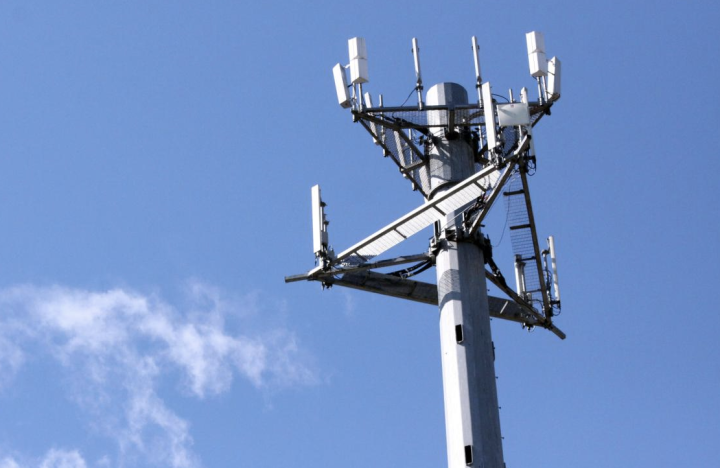
You might be wondering where the 5G towers in your town are located. For the most part, 5G towers look just like 4G towers — largely because they are 4G towers. The nationwide coverage that T-Mobile, Verizon, and AT&T all offer now is built on slightly tweaked 4G towers, so if you see a traditional cell tower and have 5G coverage in your area, chances are that same tower also supports your area’s 5G network. The fact that they were able to reuse these 4G cell towers is partly how all three carriers were able to roll out nationwide 5G networks on such a short timeline.
 Julian Chokkattu/Digital Trends
Julian Chokkattu/Digital TrendsAs carriers start to roll out midband and high-band (mmWave) spectrum, however, this may change. As mentioned, mmWave frequencies can’t travel as far as the Sub-6 frequencies that nationwide networks rely on, and as such, to get mmWave coverage in a city, there must be hundreds, or even thousands, of small cells around the city. These are small white nodes that hang on the side of a building or sometimes on their own little pole. Sometimes they’ll be painted a different color to blend in with their environment, but usually, they’ll remain white.
More of these small cell towers and nodes are likely to pop up in cities in the near future, although they’ll likely be limited to heavily populated areas. However, most areas are likely to rely on midband transceivers; these may require new towers for better coverage, but they won’t look that different from the cellular towers you’ve seen before. Rural areas are likely to continue using existing 4G towers with upgraded low-band 5G equipment installed on them.
Is 5G safe?
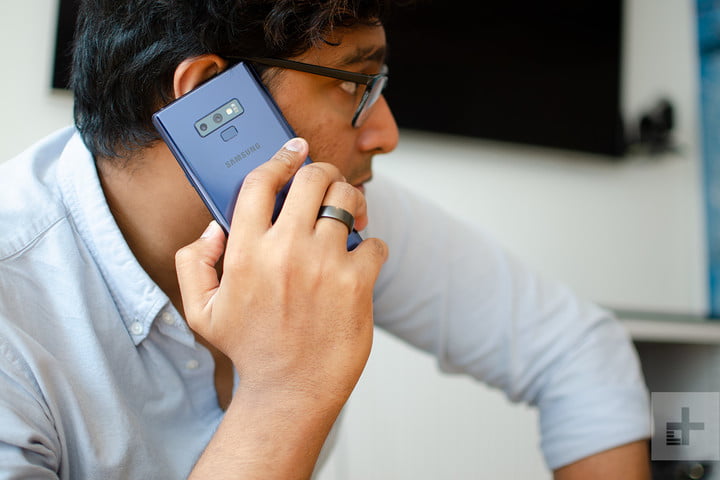 Julian Chokkattu/Digital Trends
Julian Chokkattu/Digital TrendsYes, 5G is safe — 5G is not dangerous to your health. Concerns about the safety of radio waves have been around for years, but we have yet to find any evidence suggesting that they’re actually bad for human health despite the 5G conspiracy theories.
There are two kinds of radio waves: Ionizing, and non-ionizing. Ionizing waves — the types of radio waves that are used in radiotherapy and X-ray machines — can definitely be dangerous for human health. However, these waves are typically measured in terahertz (THz) and petahertz (PHz), where the infrared and ultraviolet ranges begin. That’s an order of magnitude beyond even the top of the extremely high frequency 39GHz range used by mmWave 5G.
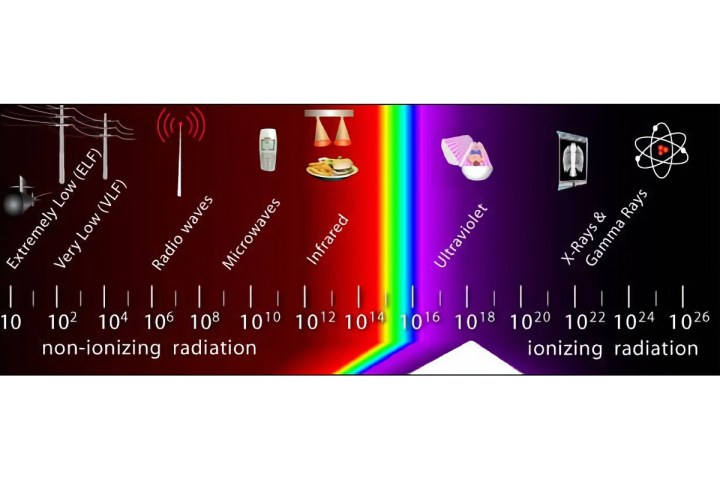 OSHA / U.S. Department of Labor
OSHA / U.S. Department of LaborThe radio waves used by 5G are not substantially different from those we’ve already been living with for decades, and almost all of them run on the same frequencies that have been long used for 2G, 3G, 4G, and even TV broadcasts, weather radar, and aircraft communications. Even higher-frequency mmWave signals share spectrum that’s long been used for microwave towers, satellite communications, airport security scanners, and weather and military radar systems — and mmWave operates at substantially lower power levels than any of these other devices.

 Kass
Kass 








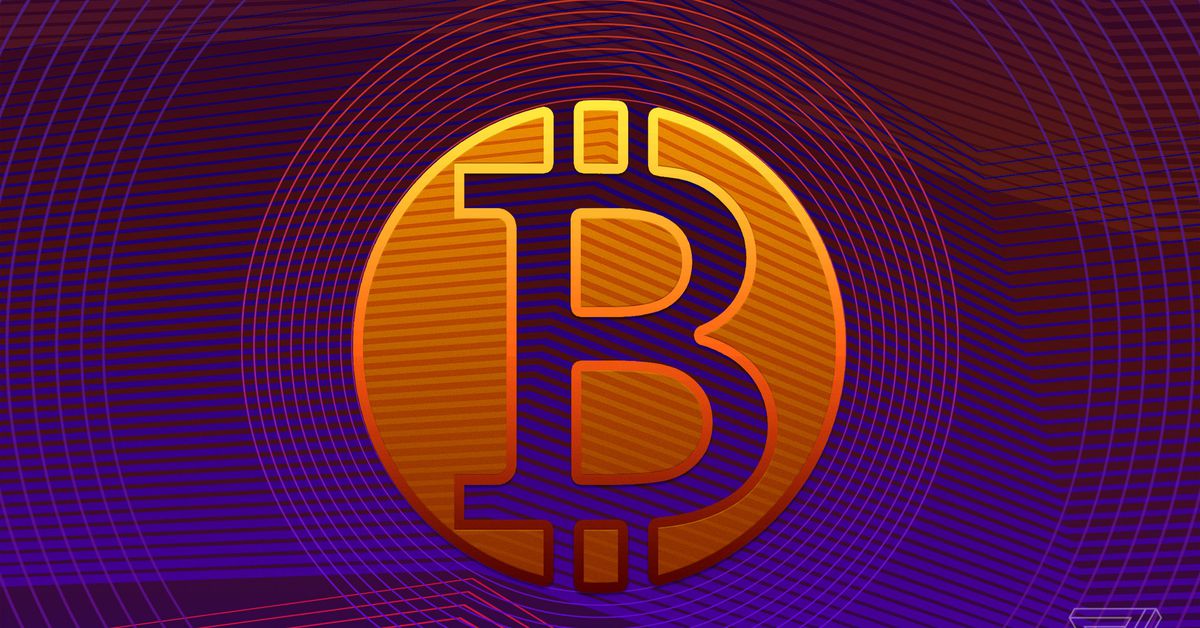










.jpg&h=630&w=1200&q=100&v=6e07dc5773&c=1)











